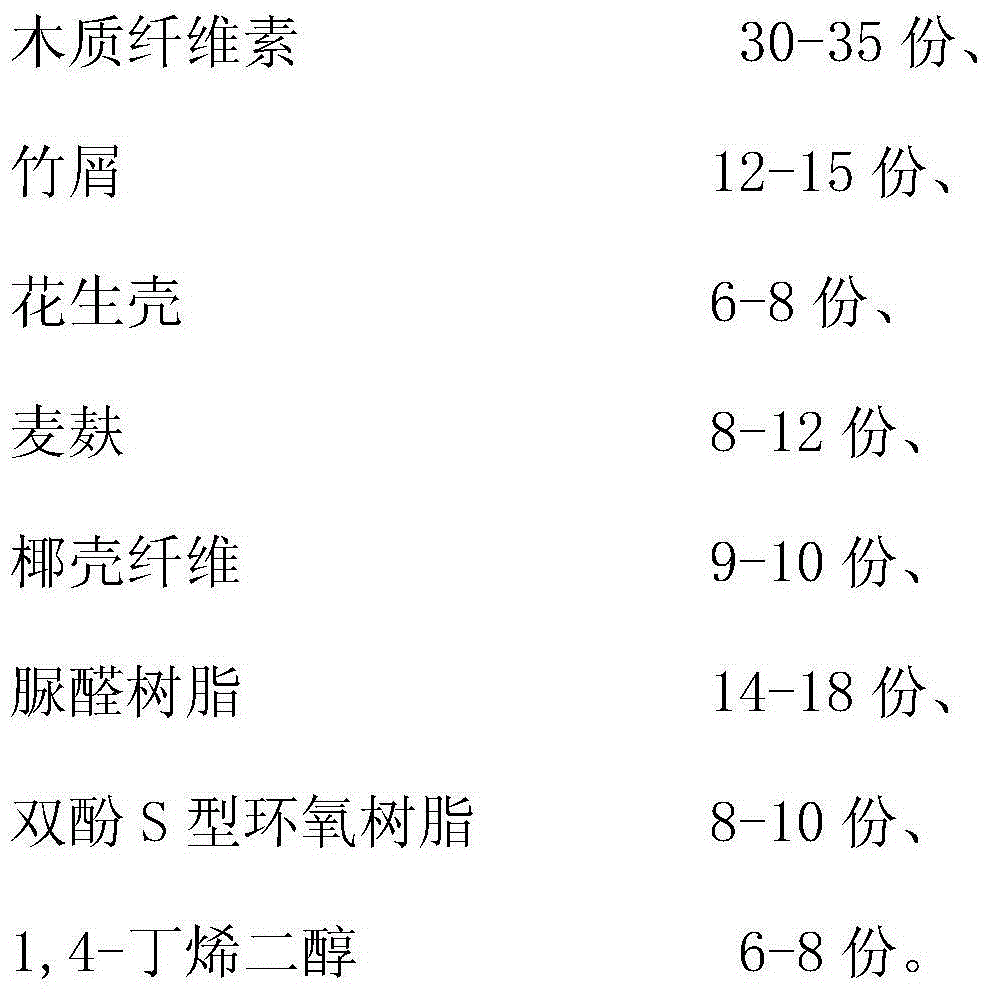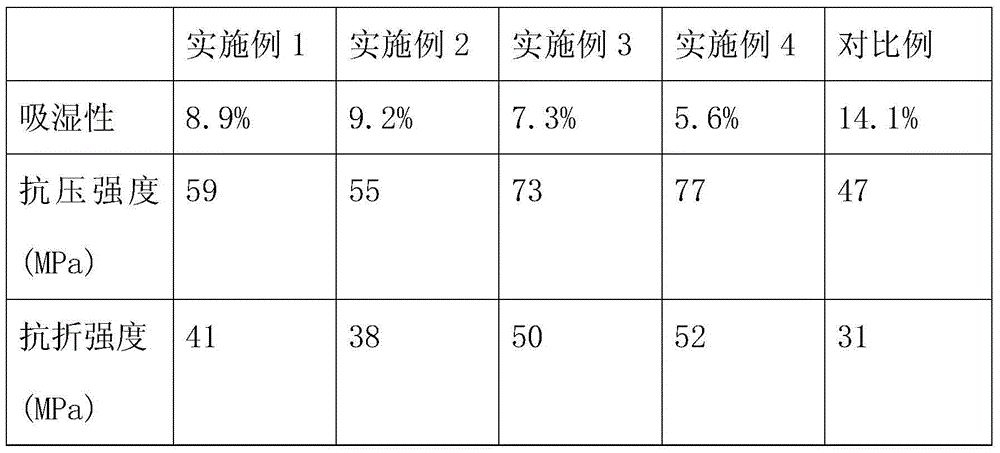Novel composite fiberboard material and novel manufacturing method and application thereof
A technology of composite fiber and board materials, applied in the field of composite fiber board materials and its preparation, can solve the problems of consumption of wood resources, limited sources of density board raw materials, excessive use of wood, etc., and achieve the goals of reducing consumption, improving strength and improving utilization efficiency Effect
- Summary
- Abstract
- Description
- Claims
- Application Information
AI Technical Summary
Problems solved by technology
Method used
Image
Examples
Embodiment 1
[0021] (1) 5 kinds of raw materials of lignocellulose, bamboo chips, peanut shells, wheat bran and coconut shell fiber are pulverized respectively by weight, and pulverized to the particle size of each raw material mentioned above is 400 mesh; (2) grinding step (1) The crushed lignocellulose, bamboo chips, peanut shells, wheat bran, and coconut shell fibers are dried; (3) take 26Kg of lignocellulose, 16Kg of bamboo chips, 9Kg of peanut shells, 13Kg of wheat bran, and 8Kg of coconut shell fibers by weight, Mechanically mix evenly; (4) Set the temperature to 95°C, add 22Kg of urea-formaldehyde resin, 12Kg of bisphenol S-type epoxy resin, and 5Kg of 1,4-butenediol to the powder raw material in step (3), and stir until uniform (5) molding the fiberboard substrate material in step (4) under pressure in a mold with a pressure of 70MPa and a temperature of 85°C during pressurization.
Embodiment 2
[0023] (1) 5 kinds of raw materials of lignocellulose, bamboo chips, peanut shells, wheat bran, and coconut shell fiber are pulverized respectively by weight, and pulverized to the particle size of each raw material mentioned above is 300 mesh; (2) grinding step (1) The crushed lignocellulose, bamboo chips, peanut shells, wheat bran, and coconut shell fibers are dried; (3) take 40Kg of lignocellulose, 11Kg of bamboo chips, 5Kg of peanut shells, 7Kg of wheat bran, and 12Kg of coconut shell fibers by weight, Mechanically mix evenly; (4) Set the temperature to 75°C, add 12Kg of urea-formaldehyde resin, 6Kg of bisphenol S-type epoxy resin, and 9Kg of 1,4-butenediol to the powder raw material in step (3), and stir until uniform (5) molding the fiberboard substrate material in step (4) under pressure in a mould, the pressure being 90MPa, and the temperature during pressurization being 80°C.
Embodiment 3
[0025] (1) 5 kinds of raw materials of lignocellulose, bamboo chips, peanut shells, wheat bran, and coconut shell fiber are pulverized respectively by weight, and pulverized to the particle size of each raw material mentioned above is 300 mesh; (2) grinding step (1) The crushed lignocellulose, bamboo chips, peanut shells, wheat bran, and coconut shell fibers are dried; (3) take 35Kg of lignocellulose, 12Kg of bamboo chips, 8Kg of peanut shells, 12Kg of wheat bran, and 10Kg of coconut shell fibers by weight, Mechanically mix evenly; (4) Set the temperature to 75°C, add 14Kg of urea-formaldehyde resin, 8Kg of bisphenol S-type epoxy resin, and 6Kg of 1,4-butenediol to the powder raw material in step (3), and stir until uniform (5) molding the fiberboard substrate material in step (4) under pressure in a mold with a pressure of 86MPa and a temperature of 80°C during pressurization.
PUM
| Property | Measurement | Unit |
|---|---|---|
| Granularity | aaaaa | aaaaa |
Abstract
Description
Claims
Application Information
 Login to View More
Login to View More - R&D
- Intellectual Property
- Life Sciences
- Materials
- Tech Scout
- Unparalleled Data Quality
- Higher Quality Content
- 60% Fewer Hallucinations
Browse by: Latest US Patents, China's latest patents, Technical Efficacy Thesaurus, Application Domain, Technology Topic, Popular Technical Reports.
© 2025 PatSnap. All rights reserved.Legal|Privacy policy|Modern Slavery Act Transparency Statement|Sitemap|About US| Contact US: help@patsnap.com



